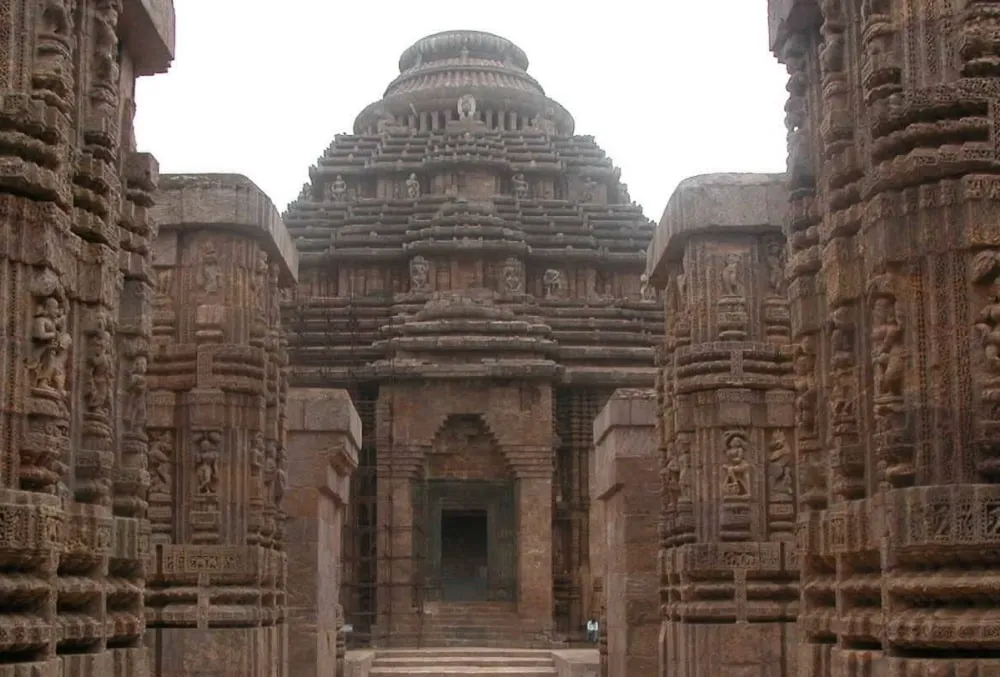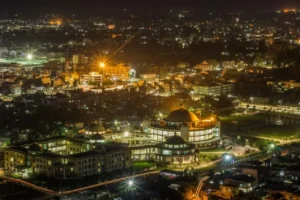Some Great Examples of Indian Temple Architecture: Types of Temple Architecture
Piyush Kumar September 14, 2022 0
A Temple is a structure built for the objective of spiritual and religious activities such as meditation, prayer, and worship. The house of worship in many ancient religions. The architecture or building style of temples varies in different places.
Ancient India’s Art, style, and Architecture play a vital role in specifying the pattern of Indian Religion and Culture. Temple architecture was developed in almost all regions of ancient India. The architectural style of temple construction in different parts resulted in climatic, ethnic, racial, historical, and linguistic diversities.
Table of Contents
ToggleBasic Form of Temple Architecture:-
The fundamental elements that comprise a Temple are given below:
- Garbhagriha: It means a womb-house. It is a cave-like altar that houses the main icon of the temple. Earlier it was a small cubicle with one entrance. But later, it grew into a larger chamber.
- Mandapa: The entrance to the temple. A colonnaded hall where worshippers stand.
- Shikhara/Vimana: From the 5th century CE. It is a mountain-like steeple on top. In the northern part of India, it is mainly called Shikhara. In the southern region, it is a pyramidal tower-shaped and is called Vimana.
- Amalaka: It is a Stone-like disc at the top of the temple. Mostly in north Indian temples.
- Kalasha: It is one of the topmost parts of the temple. Mainly it is in north Indian temple architecture.
- Antarala: It is a hall between the Garbhagriha and the Mandapa.
- Jagati: This is mostly in north Indian temples and is a platform where devotees can come, sit and pray.
- Vahana is the vehicle of the central divine being and the Dhvaj, which are placed axially.
The prominent styles of temples in the country are known as Nagara in the north, Dravida in the south, and Vesara fusion of both North and South.
Nagara or North Indian Temple Architecture
The Nagara style is associated between the Himalayas and Vindhyas in the Northern parts of India.
In this style, the structure comprises two buildings, the main taller shrine and an adjoining mandapa which is short.
The difference between these two buildings is the shape of the Shikhara. A bell-shaped structure is added.
The temples are mainly formed of four chambers. They are:-
- Garbhagriha
- Jagmohan
- Natya Mandir
- Bhoga Mandir
The Nagara temples are mainly built on stone platforms.
- There are four projection types.
- One projection on each side- ‘triratha.‘
- Two projections type – ‘Pancharatha.’
- Three projections type– ‘Saptharatha.’
- Four projections type –’ Navaratha.’
Shikhara is a tower in an elevation inclined in a convex curve. The projections are also carried upwards to the top of the Shikhara.

Central India Temple Architectures
The Ancient Architectural temples of Uttar Pradesh, Madhya Pradesh, and Rajasthan share many traits.
Udaigiri: It is on the outskirts of Vidisha. It is a part of a larger complex of cave temples, while the other one is at Sanchi.
Deogarh: It was built in the sixth century in the northern part. It is an example of a late Gupta Period type of temple.
The Lakshmana temple of Khajuraho. It is dedicated to Vishnu. It was built in early 954 by the Chandela king, Dhanga. It is Nagara temple.
Western Indian Temple Architectures
There are many temples in north-western parts of India, such as Gujarat, Rajasthan, and Western Madhya Pradesh.
- The temples ranged in color and type and were built with the help of stones.
- Sandstone was used very commonly.
- The use of soft white marble can be seen in Jain temples on Mount Abu.
- The sun temple at
Eastern Indian Temple Architectures
Those are found in North East, Bengal and Odisha. Terracotta was the primary medium for establishing the temples.
Some of the temples around the region are:-
- Kamakhya temple, the Shakti Peeth, is dedicated to Goddess Kamakhya and was built in the early 17th century in Assam.
Dravida Or South Indian Temple Architecture
The Dravida sally emerged in the southern part of India. It has an entrance gateway called Gopuram. Therefore Two essential characteristics of the Dravida temple architecture. They are:-
- Temples have more than four sides in the sanctum .
- Tower or Vimana Pyramidal Shape.
- The Kailasanatha temple is a prominent example of the Dravida Architecture.
- Some temples like Kanchipuram, Thanjavur, Tanjore, Madurai, and Kumbakonam are the most famous temple towns of Tamil Nadu.

Like Nagara temple architecture style has subdivisions, there are subdivisions of Dravida temple architecture.
- These are five distinct shapes.
- Caturasra means the square shape
- Shala or Ayatasra means rectangular shape.
- Gaja-prishta means elliptical, also known as Vrittayata.
- Vritta means circular.
- Ashtasra means octagonal.
Vesara Temple Architecture
It is a fusion architecture style of both Nagara and Dravida temple architecture.
Many Central India and Deccan temples have used the Vesara style with regional moderations.
Temples were assembled, but later, Chalukyas of Kalyani and Hoysalas were examples of Vesara architecture style. Thus India and its temple architecture are embedded in the culture, history, and religion. Among the architectural designs and styles, the best known includes a wide variety of temples. Some of them are mentioned above.
As we have found in recent years, many of the items have been found in temples and religious places. It not only proves the heroic events that our ancestors used to tell us, but it also serves as a benefit not only for the architectural cause but for also increasing the Heritage and cultural beauty of our country.
Conclusion
To conclude, temples not only serve as a significant architectural form of the land, but it also helps us to spread and show the beauty that is the diversifying culture and Heritage of India.
Not only this, but these types of architecture that are our beautiful temples invite foreigners to see them as a form of attraction. It also increases the foreign trade exchange that is much needed by our country. Thus the temples being as beautiful as they are, also serve the Indian economy.
About Author
Piyush Kumar
We, with our blogs, promotes the traveling lifestyle and helps in guiding people about all the aspects of exploring a new place, shaktipeeth, jyortirlinga, foods, temples, etc.








